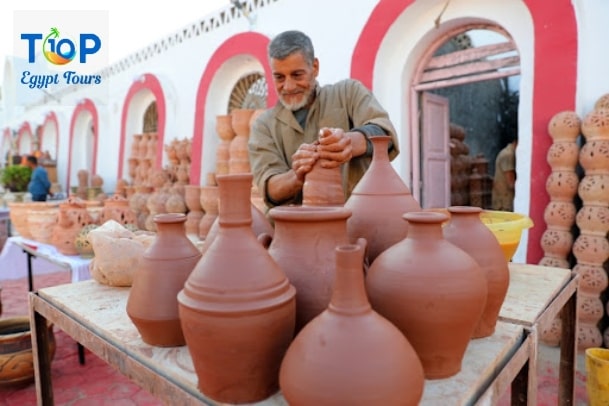Ancient Egyptians were known for making pottery since the beginning of the Stone Ages, that is, before the dynasties, where pottery vessels were made in a primitive way, until this changed, and this changed in the Badari period, “the pre-dynastic civilization”, and what followed it, and because it was a different period of time, the Egyptian antiquity began to The reigns first, and after the passage of many kings, it then came to the use of the wheel of time or the large tractor “wheel” during the era of the First Dynasty and what followed.
Pottery was made by bringing rolled clay and then polishing it, so that this clay was polished using a wheel. This wheel was used in Egypt about 4000 years BC, where it was shaped using this tool and with the help of the human hand, and this piece was also decorated. Then put it to dry before putting it in the oven
The first pottery production centers in Egypt were settled in the areas located on the banks of the Nile. The most important of these cultural centers distinguished by their production of Egyptian pottery are: Tal Al-Badari Center in Assiut Governorate 5000-4000 BC, and “Dirtasa” on the eastern side of the Nile, close to Al-Badari in Assiut Governorate. and “critics”
The Egyptian Museum in Tahrir, the oldest archaeological museum in the Middle East, displays a large collection of pottery.
The pottery industry in Egypt went through a number of stages, starting from the Stone Age, through the Coptic and Roman eras, until the Islamic era. All of these eras left their impact on the form of pottery made in Egypt to this day.
Despite the primitiveness of the craft and its reliance on simple basics and tools that you can find in any home, industrial developments added a number of features that facilitated the process of making pottery, the most important of which are the large electric kilns that allowed the production of thousands of pottery pieces in one day.



Comment (0)